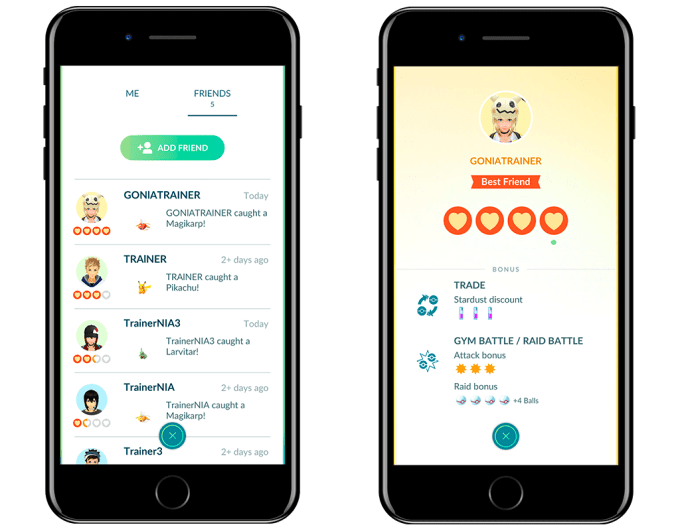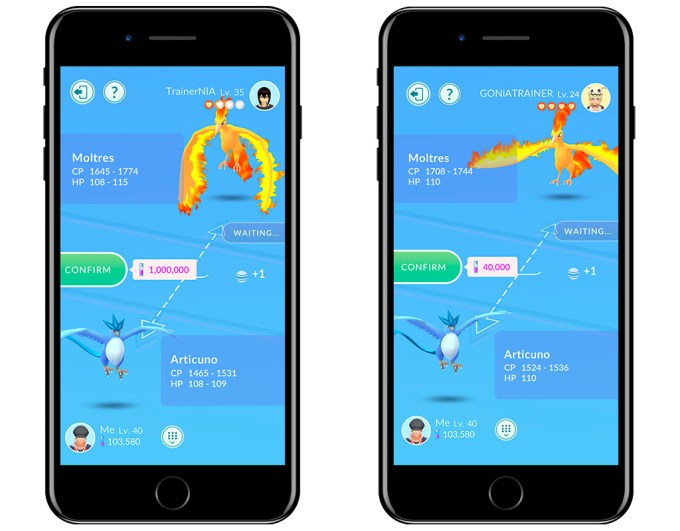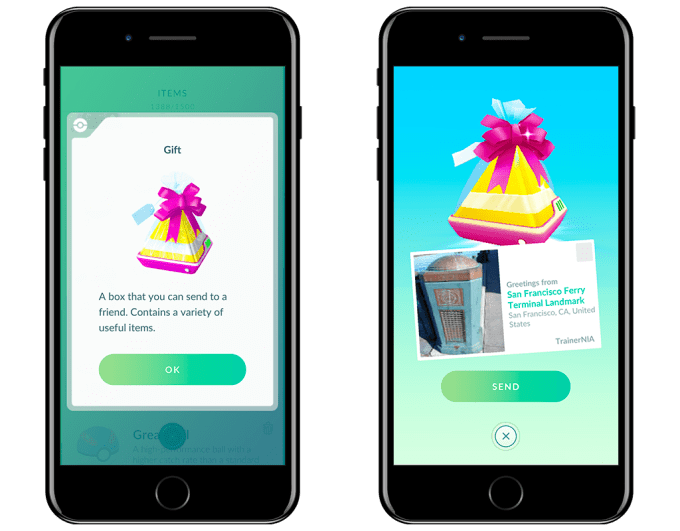Just shy of two years after launch, Pokémon GO is finally about to roll out one of its most notably absent features: Pokémon trading.
A staple of the series, trading lets players swap their Pokémon with another player in the never-ending quest to, well, catch ’em all.
The trading mechanics will be tied into a new Friend system; the Friend system will roll out later this week, with the trading mechanics going live “soon after” (though Niantic doesn’t want to get more specific than that, presumably in case something breaks).
Here’s how it all works:
-
- To trade with someone, you must be their in-game friend *and* within 100 meters (~320 ft.) of them.
- To become friends, you exchange your unique Trainer Codes.
- Once friends, you’ll get in-game perks for playing together. Your Pokémon will get attack bonuses when battling gyms together, for example — and when you raid together, you’ll get extra Pokéballs.

-
- The more you play together (raiding, battling gyms, etc), the higher your relationship level will be.
- Certain Pokémon (Legendaries, Shinies and any Pokémon you don’t already have) are considered “special trades.” You can only make special trades with the players with whom you’ve reached the higher tiers of friendship. In other words, they mostly want you trading with the people you play with somewhat regularly — not rando spoofers selling Pokémon on eBay.
- You can only make one special trade per day.
- Trades cost stardust (the in-game resource otherwise required for powering up a Pokémon). The rarer the Pokémon, the more it’ll cost to trade. Having a higher friendship level, though, will offset that a bit (note in the example below, for instance, how it starts at a rather insane requirement of a million stardust and drops down to a more manageable 40,000 as the friendship level, shown in the upper right, increases).

Meanwhile, they’ve also introduced another entirely new concept as part of the friend system: Gifts. Every once in a while, spinning a Pokéstop will give you a “Gift” item. You can’t open it yourself — instead, you’re meant to send it to a friend for them to open. It’ll arrive marked with a photo of the stop where you picked it up — a little Pokéstop post card, of sorts, bundled with a handful of “helpful items.” Niantic doesn’t say exactly what those “helpful items” might be, though they do note that they could include eggs containing Alolan Pokémon (which, for the most part, haven’t been made available in-game yet).

While the trading/friend system might seem a bit complicated, with its stardust requirements and daily limits and friendship requirements, it theoretically helps limit some issues that a free-for-all trade system might face. It’s easy to imagine someone spoofing back and forth around the world to farm rare Pokémon as they pop up, slinging them on eBay (or wherever) for a few bucks a pop, and just spoofing to an agreed location to initiate a trade. Requiring players to have some history of playing/raiding/battling gyms together before they can trade the good stuff makes that a bit more challenging.
No comments:
Post a Comment